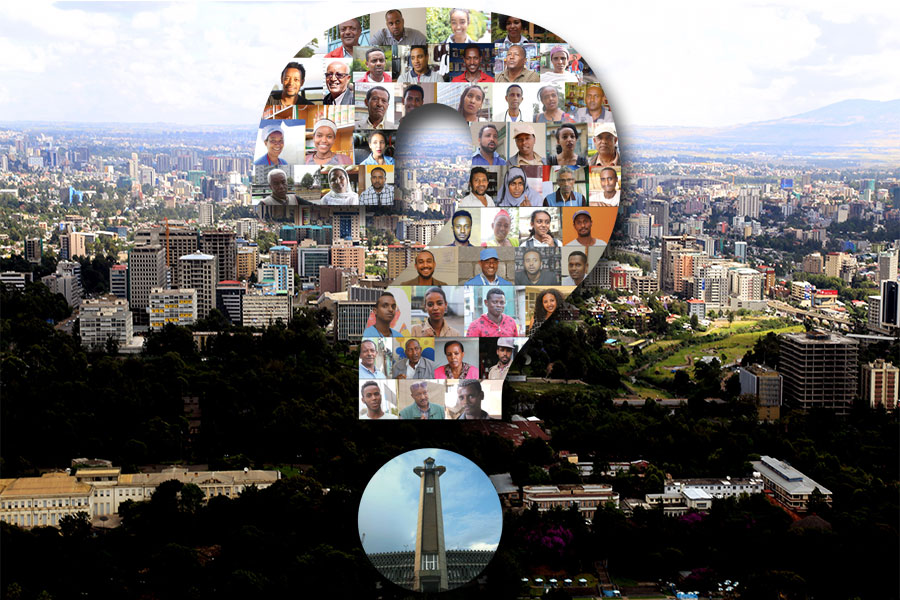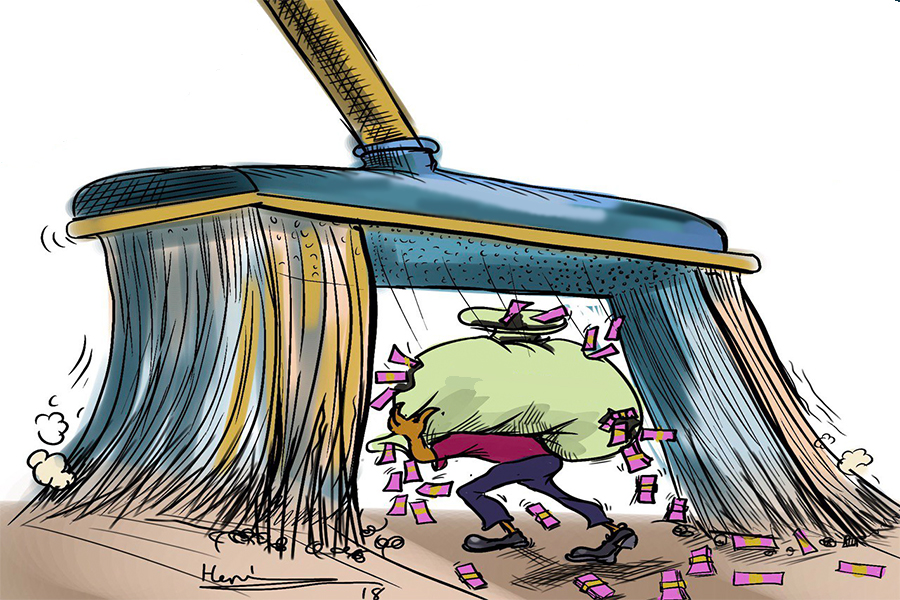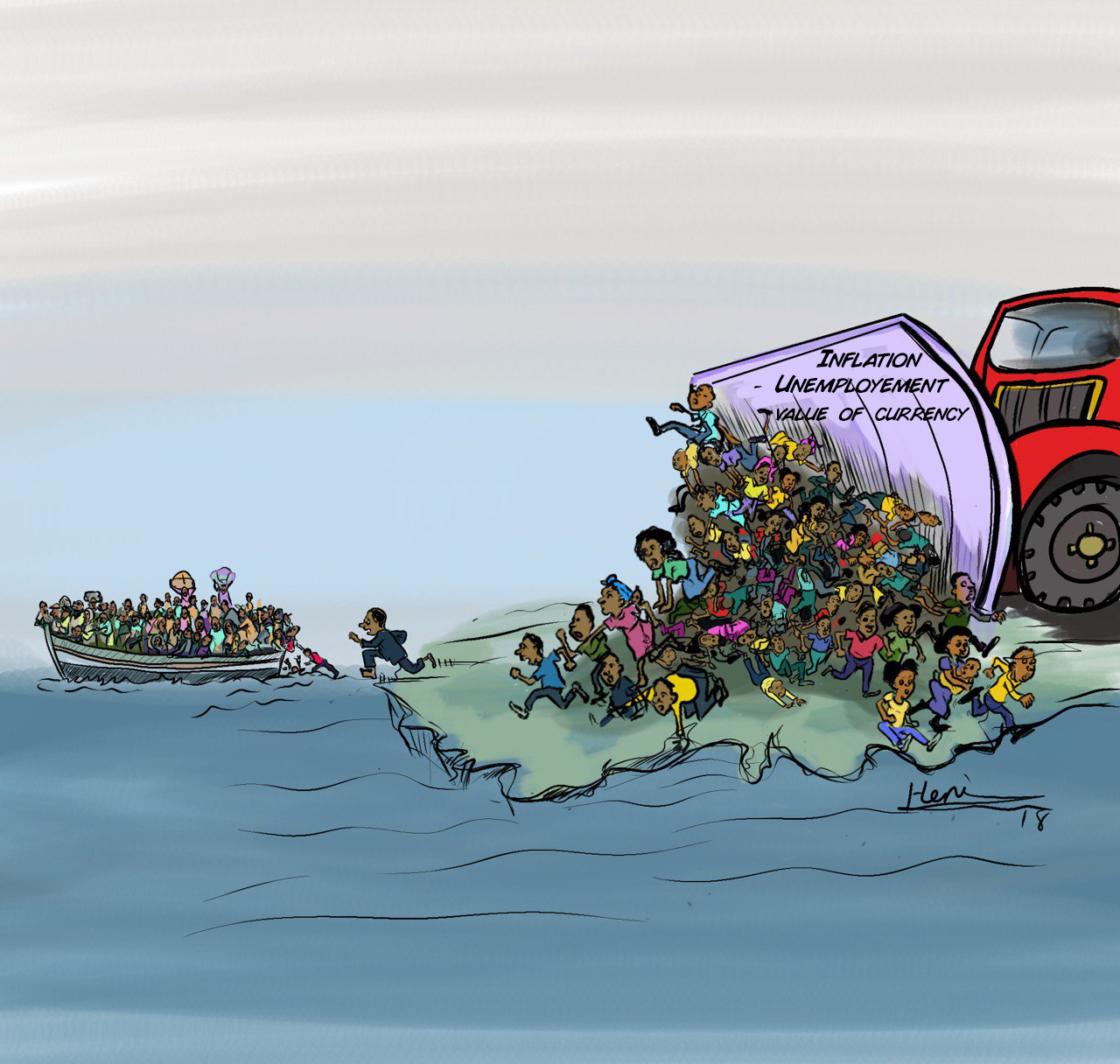
Aug 2 , 2025.
At daybreak on Thursday last week, July 31, 2025, hundreds of thousands of Ethiopians fanned out across parks, highways, and riverbanks, seedlings in hand, driven to smash what organisers say was another record.
The federal government had vowed to plant 700 million trees in 24 hours, surpassing the 560 million it claims to have managed last year and India’s 66 million in 2017. By mid-afternoon, officials were already celebrating. They declared the following day that over 14.7 million saplings had been attained above the target.
“It’s been seen again the miracle Ethiopians do when cooperating,” crowed Prime Minister Abiy Ahmed (PhD), on X, formerly Twitter.
Several federal and regional leaders were seen sharing photos and video clips of mud-caked hands. Their party, the Prosperity Party (PP), has posted a message to the world: “Unity makes anything possible.”
Abiy’s Green Legacy Initiative has become a parade of giant numbers. In 2019, his government claimed to have planted 353 million trees in one day, followed by 450 million in 2021 and 560 million in 2023.
Granted, mobilising over 29 million volunteers is impressive by any measure. Yet, a rough sum could reveal the strain on such claims. Each planter must jab 35 seedlings into the ground in 24 hours, one every 40 minutes, without taking a break for food, water, or sleep.
Even crack reforestation squads working in perfect conditions would struggle to keep pace.
The economics are as daunting. A seedling, without associated costs for the staff, transport, and tools to shepherd it to planting sites, costs about 120 Br. Hitting the 700 million mark, therefore, implies over 84 billion Br of taxpayers’ money, roughly 4.5pc of the federal budget for 2025-26, the amount apportioned to national defence or a little lower than what is allocated to social services.
In a country where 33pc of the population lives below the global poverty line (according to the World Bank's poverty and equity assessment released last year) and shortages of food and electricity are routine, diverting nearly half the purse to a one-day stunt would invite awkward questions.
However, mass planting of trees remains very crucial for Ethiopia. Its forest cover fell from 35pc early in the last century to less than four percent by the 2000s, stripped away by small farms, fuel-wood cutting, and logging. The Green Legacy’s ambitions to reverse the damage should be praiseworthy, albeit in terms of numbers and economics.
Neither India nor Ethiopia is the first to introduce such culture in their respective societies. In 1872, a Nebraska (United States) newspaperman launched a civic planting drive later echoed by Franklin Roosevelt’s Civilian Conservation Corps (CCC). At its peak in the 1930s, the CCC employed 300,000 young men and planted over three billion trees in a decade. During the Second World War, Washington backed a project to plant cork oaks, shielding Allied Forces’ supply chains from Mediterranean blockades.
After the Korean war, South Korea’s National Reforestation Programme planted more than two billion trees between 1962 and 1978, lifting forest cover from 35pc to over 65pc.
What all those efforts shared, though, was patience. America and Korea worked for years.
It would be unwise for Ethiopia’s leaders to trade duration for spectacle. The hazards show quickly. In some districts, torrential rain washed away a third of the seedlings within hours. National survival rates remain around 20pc and 30pc.
The species list deepens unease. Almost 80pc of global pledges under the Bonn Challenge are monoculture plantations, favouring quick-growing exotics that furnish timber but not biodiversity.
Ethiopia’s guides prescribe the use of eucalyptus and acacia, which are valuable for poles and fuel, yet poor substitutes for the native montane forests. Without careful matching of species to site, new plantations can siphon water and worsen drought.
International financiers note the gap between promise and proof. Ethiopia has earned only 70 million dollars from carbon credits; Kenya has banked 200 million dollars, and Gabon 150 million dollars. Both countries run rigorous monitoring, reporting, and verification (MRV) schemes demanded by offset markets.
Reaping carbon revenue is possible if MRV improves. Gabon measures every hectare by satellite and ties payments to survival; Kenya maps projects and audits removals. Ethiopia will need similar transparency if it hopes to tap a market now worth tens of billions of dollars.
Symbolism, though, cannot mend watersheds. Moving from spectacle to strategy would shift cash from sapling counts to nurturing forests. Assisted natural regeneration, which allows seeds in the soil to sprout and promotes regrowth, costs a fraction of planting and often outperforms it. Global studies reckon that restoring 150 million hectares in this manner could yield 84 billion dollars annually in benefits and create millions of rural jobs.
Land tenure muddies matters further. A tangle of imperial and socialist land laws means many farmers lack secure rights to the trees they raise. With few rewards for survival, households see little reason to tend seedlings after officials leave.
Financial carrots could help. Ghana’s payment-for-environmental-services scheme surged when money flowed directly to smallholders. By treating planting as a civic duty rather than a partnership, Ethiopia’s leaders may undercut local stewardship.
The fundamental question is whether numbers outweigh nature. If 714.7 million exists only on spreadsheets, the exercise is Pyrrhic. Authentic leadership is judged not by saplings flashed on television but by forests that cool rivers, anchor soils, and shelter wildlife decades hence.
Nonetheless, ambition itself is admirable. Few governments can mobilise 20 million volunteers in a single day. Yet, oversized targets risk breeding cynicism and damaging the credibility of the state. A citizen ordered to plant 35 trees under hot skies with scarce water may view the exercise as a chore, rather than a cause.
A wiser path would slow the sprint. Pilot plots should test blends of species, spacing, and after-care. Independent audits at six and 12 months should replace self-congratulation at the end of the week. Spending should favour nurseries, drip irrigation, and extension services over endless procurement.
Above all, communities should obtain legal title to trees they manage, aligning private gains with the public good.
To plant today is to leave shade for grandchildren. But stewarding a forest takes patience, science, and humility. Saplings cannot be rushed like election rallies. Unless leaders exchange stopwatch heroics for steady husbandry, the Green Legacy risks being remembered as a grand count rather than a green canopy.
PUBLISHED ON
Aug 02,2025 [ VOL
26 , NO
1318]

Photo Gallery | 180459 Views | May 06,2019

Photo Gallery | 170658 Views | Apr 26,2019

Photo Gallery | 161714 Views | Oct 06,2021

My Opinion | 137285 Views | Aug 14,2021

Nov 1 , 2025
The National Bank of Ethiopia (NBE) issued a statement two weeks ago that appeared to...

Oct 25 , 2025
The regulatory machinery is on overdrive. In only two years, no fewer than 35 new pro...

Oct 18 , 2025
The political establishment, notably the ruling party and its top brass, has become p...

Oct 11 , 2025
Ladislas Farago, a roving Associated Press (AP) correspondent, arrived in Ethiopia in...